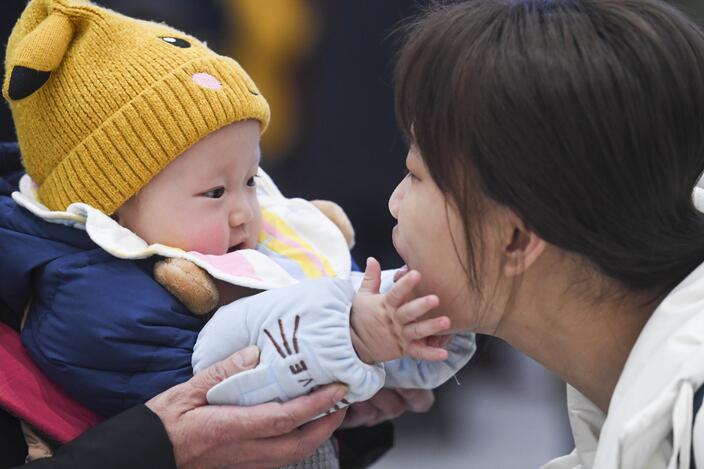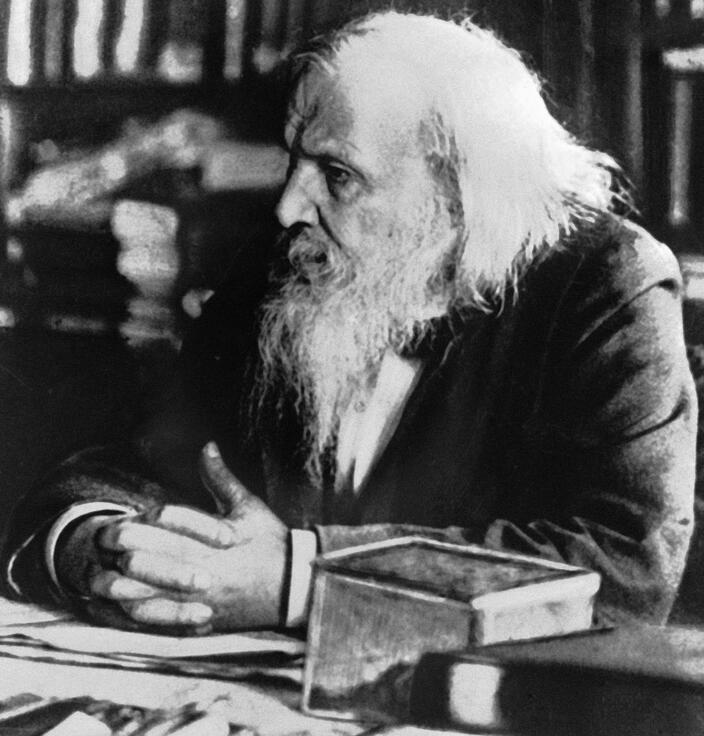Photo: © Global Look Press/Michael Runkel/imageBROKER.com

Photo: © Global Look Press/Michael Runkel/imageBROKER.com
In 1906, Dmitry Ivanovich Mendeleev made one curious forecast about the population of the Russian Empire by 2026. At the time of calculations, it was 146 million citizens. Mendeleev relied on the data of the 1897 census and the statistics of the following years. The forecast, to put it mildly, is optimistic – more than a billion people.
Here is a quote from his research: “The Russian Empire was distinguished by a large natural population growth, even wars had practically no effect on this indicator. In every minute of the day and night, the total number of births in Russia exceeded the number of deaths by 4 people. Annual natural population growth – at least 2 million inhabitants.
Why didn’t Mendeleev’s prediction come true? Why did China abandon the policy of “one family – one child”? And why does the UN believe that it is urgent to introduce birth control? Talks about it program “Unknown History” with Boris Ryzhov on REN TV.
What led to the permission to have only one child in China
Over the past two hundred years, despite all the wars, epidemics and geopolitical catastrophes, there have been eight times more people on Earth – an incredible increase. India and China are the leaders in terms of population. Almost a third of earthlings live in these two countries.
According to the UN forecast, the gap between India and China in terms of population will increase significantly in the coming years.
“China now has one of the lowest birth rates. Therefore, China is threatened with a very severe depopulation. There will be up to two pensioners for one working person,” Andrey Korotaev, a leading researcher at the RANEPA Human Capital Demography International Laboratory, said.
The reason for this crisis is the policy pursued in the state in the 70s of the last century. Then the Chinese authorities decided to reduce the country’s population to one billion two hundred thousand people and launched the program: “One family – one child.”

“Due to large fines and due to various kinds of political condemnation, administrative prohibitions – everything was aimed at ensuring that families in the cities had no more than one child,” – said Yuri Krupnov, Chairman of the Supervisory Board of the Institute of Demography, Migration and Regional Development.
Women were forced to undergo abortions and even sterilization. And families that, contrary to the law, gave birth to children, were punished with a large fine. The name of the woman in the video is Nanfu, which means “Male Support of the Family” in Chinese. Her parents dreamed of a son, but they understood that they were unlikely to have a second child.
“I was born in 1985, and six years earlier, China introduced a one-child policy. Immediately after my birth, local officials suggested that my mother be sterilized. Grandpa resisted because he wanted a grandson who would keep his last name. And my parents nevertheless gave birth to a son, having paid a fabulous fine. He amounted to five average salaries of our family, “ she said.
In 2015, the “one family, one child” policy was canceled because of it, the country faced a lot of problems. The main ones are the lack of labor force and gender imbalance. Now the authorities are trying in every possible way to stimulate the birth rate. But so far without success.

“It turned out that it is quite easy to administratively and economically force a low birth rate. We see that such dramatic changes have taken place over the course of several decades. actually how to do it” noted the expert Krupnov.
Census history
Population counting was first puzzled in antiquity. But the censuses then were extremely imperfect. Only men were taken into account, since it was they who paid taxes and served in the army.
In the Middle Ages, scribe books became widespread in Western Europe. Information about the population in them was also very scarce. As a rule, only the number of families in a particular settlement was indicated.

“The first data about the first full-fledged census of the modern type with fixing the time of the census, covers the entire population of the country, and now there is a systematic data collection program. This is Sweden, this is Sweden in 1749,” – said the expert Korotaev.
The first census of the modern type in our country was carried out in 1897. It was initiated by the famous Russian scientist Pyotr Semenov-Tyan-Shansky. The work was on a wide scale. The census sheets were also filled in by Emperor Nicholas II. He defined himself as “the master of the Russian land”, and recorded his wife as the “mistress”. According to the results of the census, it turned out that 125.7 million people live in the country.
“And it turned out, in fact, that Russia is one of the most populous countries in the world, a powerful state with a great ability to mobilize up to 20 million people for the army. And a huge number of monographs and articles were published based on the results of this census. Actually, it was such an application for the fact that a full-fledged world power is entering the 20th century,” said expert Krupnov.
Dmitri Mendeleev’s calculations
In 1906, Dmitry Mendeleev studied the results of the census and published the book “To the Knowledge of Russia”. The scientist calculated that at the turn of the 19th and 20th centuries, the natural population growth in our country was almost 2 percent per year. Higher than anywhere else in Europe. Based on these data, through simple mathematical calculations, Mendeleev came to the conclusion that in 1950, 282 million people will live in the Russian Empire, and more than a billion in 2026.

Of course, Dmitri Mendeleev could not have foreseen the terrible catastrophes that befell our country in the twentieth century. Take, for example, the Great Patriotic War, in which the Soviet Union lost about 27 million people. However, during World War II, the mass production and use of antibiotics began. The development of medicine has led to an increase in the population around the world.
“Antibiotics turned out to be a powerful tool in the fight against almost all infectious diseases, including the fight against infection associated with a wound on the battlefield. Just after the Second World War, such a massive diffusion of antibiotics went precisely to the periphery of the part of humanity. And most of humanity lives in the third world,” – said the expert Korotaev.
What will happen to the world’s population in the future
According to UN forecasts, by 2050 more than half of the world’s population will live in just eight countries: the Democratic Republic of the Congo, Egypt, India, Nigeria, Pakistan, Tanzania, the Philippines and Ethiopia. And Africa over the next 80 years will become the main driver of world population growth.
“According to these forecasts, the population of Uganda, in general, will reach the population of Russia by the end of the century. Accordingly, the population of Tanzania will be twice the population of Russia. The population of Nigeria – this is the whole of Europe together with Russia will exceed in population,” – shared the expert Korotaev.

The robot child and the lights off: unusual ways to stimulate fertility
While Africa is solving the problem of overpopulation, the rest of the world is stimulating the birth rate. In every possible way.
In South Korea in 2010, they began to turn off the lights in their offices at 19:30 on the third Wednesday of each month. According to the plan of the authorities, people should devote the freed time to the family, the birth and upbringing of children.
And in Japan, they created a robotic baby that sobs, cries, giggles and sneezes just like a human child. Adults are recommended to play with this robot regularly – to awaken in them the instinct to reproduce.
Different versions of historical events, amazing episodes of history, little-known facts and interesting theories – study all this and much more in the Unknown History program with Boris Ryzhov on REN TV.
Source: Ren
Alfred Hart is an accomplished journalist known for his expert analysis and commentary on global affairs. He currently works as a writer at 24 news breaker, where he provides readers with in-depth coverage of the most pressing issues affecting the world today. With a keen insight and a deep understanding of international politics and economics, Alfred’s writing is a must-read for anyone seeking a deeper understanding of the world we live in.
